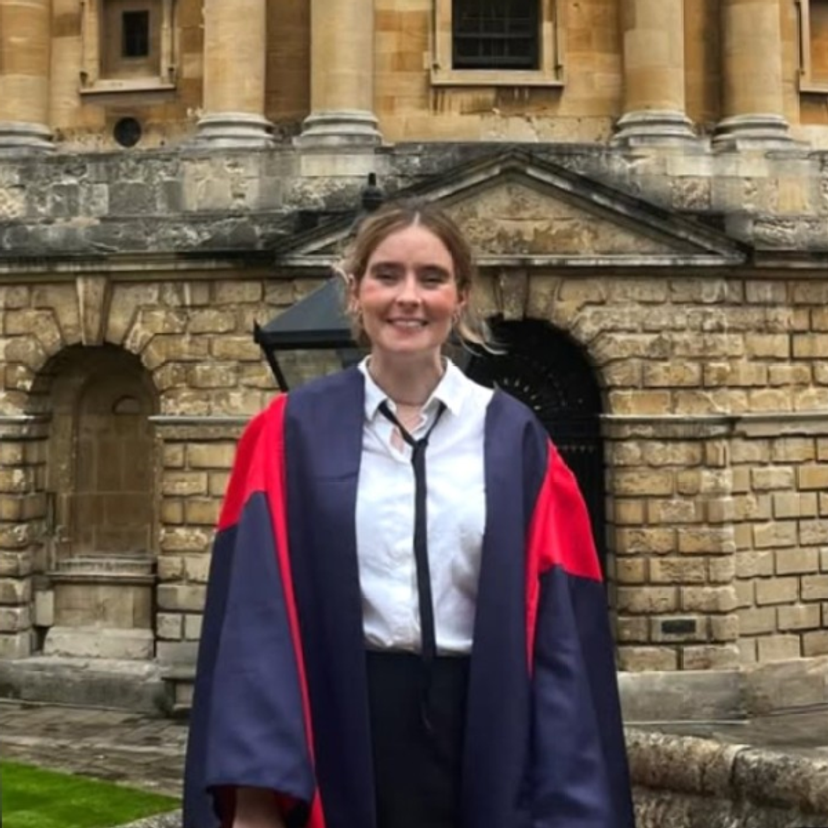Platelet DNA enhances liquid biopsies for early and residual cancer detection
Dr. Lauren Murphy at the University of Oxford is investigating how platelets could hold the key to detecting cancer in patients with minimal residual disease
1 Oct 2025

Dr. Lauren Murphy, Post Doctorate Researcher, University of Oxford’s Weatherall Institute of Molecular Medicine (WIMM)
Liquid biopsies are transforming cancer diagnostics by offering a non-invasive way to detect and monitor disease through biomarkers like circulating tumor DNA (ctDNA). However, sensitivity remains a major challenge, particularly in early-stage cancers and minimal residual disease (MRD), where tumor-derived signals are often scarce and easily masked by background DNA.
At the University of Oxford’s Weatherall Institute of Molecular Medicine (WIMM), Dr. Lauren Murphy, a postdoctoral researcher in Prof. Beth Psaila’s lab, is addressing this issue by investigating the role of platelets in capturing and preserving tumor-derived DNA. Read in this exclusive CLINICAL24 interview how her research suggests that analyzing platelet DNA alongside plasma could extend the detection window and improve relapse monitoring, opening new possibilities for earlier and more precise interventions.
What are some of the key challenges you are seeing in the liquid biopsies space, and what led Psalia's lab to investigate platelets?
LM: One of the core challenges in the liquid biopsy field is sensitivity at low tumor burden. In early disease, tumor-derived cell free DNA (cfDNA) is scarce and diluted by background DNA from healthy tissues, and even with deeper sequencing, small signals are easy to miss. So here in Psaila’s lab, we focused on improving what we sample. Platelets were a good place to start because they are abundant and sequester RNA, proteins and vesicles. We hypothesized they also capture tumor-derived DNA and may shield it from plasma nucleases. Current workflows often discard platelets during plasma preparation but analyzing them alongside plasma could recover signals missed in low-burden disease.

Prof. Beth Psaila’s team, University of Oxford
Can you explain how platelets interact with cfDNA, and why this discovery could be a turning point for early cancer detection?
LM: We are still working out the full picture, but so far, we have identified two routes for DNA uptake. The first route being that platelets internalize DNA-containing extracellular vesicles (EV) and the second is that they take up free non-membrane-encapsulated fragments. EV uptake shows partial dynamin dependence, whereas free-fragment uptake does not, suggesting a dynamin-independent pathway. Once DNA is taken up, DNase treatment does not reduce the DNA recovered, consistent with internalization. Given the fragile nature of circulating tumor DNA (ctDNA), this could be a turning point for early cancer detection as it may extend the window for detecting disease-relevant fragments.
Your research found DNA from precancerous cells inside platelets, how significant is this for identifying cancer before it fully develops?
LM: Current ctDNA approaches for pre-malignant colorectal lesions have high specificity but low sensitivity. Because about one third of cases can progress to colorectal cancer, improving detection is essential. Remarkably, we detected mutant BRAF in the platelets of these patients, and in over half of the positive cases, the signal was stronger in platelet DNA than in plasma, suggesting that platelets concentrate and preserve signals that may escape detection in plasma. This is significant because earlier detection changes patient outcomes. If we can identify high-risk polyps before they transform, they can be removed during routine endoscopy, preventing cancer from developing.
Looking ahead, what are the next steps for validating this approach, and how do you think this influences patient outcomes or screening protocols if adopted widely?
LM: Looking ahead, we are planning to increase sample numbers and run side by side comparisons of plasma cfDNA, platelet DNA, and their combination. Our primary focus is minimal residual disease (MRD), where post-therapy ctDNA is used to monitor relapse risk. We aim to assess whether a combined approach of analyzing both platelet DNA and plasma could sharpen risk stratification and prompt earlier intervention for molecular relapse, to improve patient outcomes.
